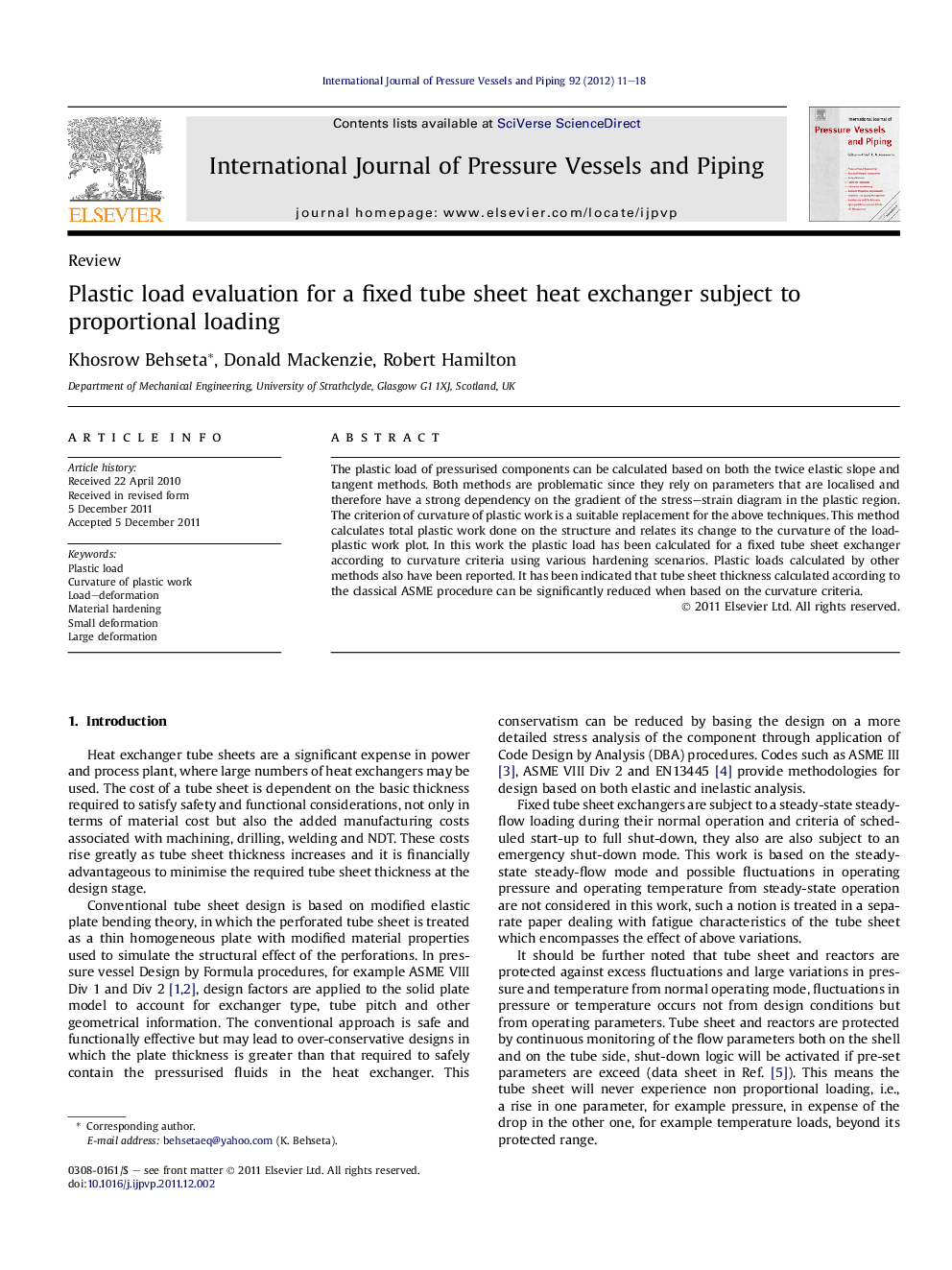| Article ID | Journal | Published Year | Pages | File Type |
|---|---|---|---|---|
| 785422 | International Journal of Pressure Vessels and Piping | 2012 | 8 Pages |
The plastic load of pressurised components can be calculated based on both the twice elastic slope and tangent methods. Both methods are problematic since they rely on parameters that are localised and therefore have a strong dependency on the gradient of the stress–strain diagram in the plastic region. The criterion of curvature of plastic work is a suitable replacement for the above techniques. This method calculates total plastic work done on the structure and relates its change to the curvature of the load-plastic work plot. In this work the plastic load has been calculated for a fixed tube sheet exchanger according to curvature criteria using various hardening scenarios. Plastic loads calculated by other methods also have been reported. It has been indicated that tube sheet thickness calculated according to the classical ASME procedure can be significantly reduced when based on the curvature criteria.
► The different types of material hardening and plastic load criteria resulted in a wide range of plastic pressures. ► Extensive plastic deformation occurs in the grooved region at the edge of the tube sheet. ► The PWC maximum curvature indicates that considerable stress redistribution has occurred in the structure. ► The calculated pressure is almost 3 times higher than the design pressure. ► Plastic load according to the curvature criteria is based on the total plastic work.
